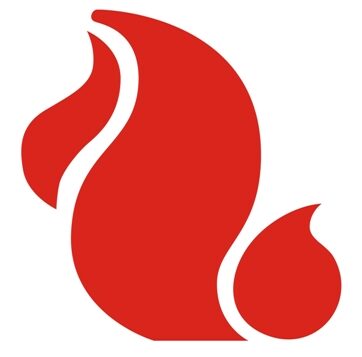The latest analytic expression with the Hallway Coefficient (HC) caused by brand new restricted electrons from the visibility out-of an effective electromagnetic trend (EMW) such as the effect of phonon confinement in square quantum cables (RQWs) try computed with the quantum kinetic formula getting electrons inside the the case regarding electron – optical phonon scattering. It is because the expression of one’s HC to the confined phonon circumstances include spiders meters, meters that are particular for the phonon confinement. The definition of during the a beneficial RQW differs from one for the matter of unconfined phonons for the a RQW or perhaps in 2D. The new numerical show reveal that HC inside the a great RQW may have each other good and bad opinions. This is different from the fact of your own lack of EMW and circumstances visibility regarding EMW including the aftereffect of phonon unconfinement when you look at the a beneficial RQW. These types of email address details are and additionally in contrast to those who work in the outcome regarding unconfined phonons into the an excellent RQW and you can confined phonons inside a great quantum well. The fresh new conductivity when it comes to confined phonon enjoys much more resonance highs compared to that if from unconfined phonons when you look at the a good RQW. The new house is an identical from inside the quantum really. Every email address details are compared with the actual situation from unconfined phonons in order to come across distinctions.
step three8 Bond Elevator: Category, Approach, and how to Approach to the person
Background: This new thread lift strategy was prominent since it is shorter intrusive, means a shorter process, reduced recovery time, and causes less postoperative complications. The advantage of the technique is the fact that thread shall be registered according to the surface without the need for a lot of time slices. Currently, there is a large number of thread elevator processes regarding the sorts of bond applied to particular areas, such as the middle-deal with, straight down face, otherwise shoulder urban area. Objective: To review new thread elevator way of particular parts according to variety of bond, patient choice, and how to satisfy the most suitable to your patient. Information and methods: A literary works opinion strategy was presented by the looking PubMed and you will MEDLINE, following compiled and you will described. Result: You will find separated our protocols toward one or two sections: Protocols to own quick suture, and you can protocols for long suture processes. I also authored 3d photographs for every process to improve skills and you will software from inside the a clinical mode. Conclusion: You’ll find advantages and disadvantages so you’re able to quick suture and you can a lot of time suture techniques. An educated consequences for every diligent utilizes compatible patient possibilities and you can determining the most suitable way of new problem and you can town out-of patient question.
37 Aftereffects of Reclaimed Agro-Commercial Wastewater for very long-Identity Irrigation from Herbaceous Vegetation to your Ground Chemical compounds Characteristics
Worldwide, about two-thirds of industrial and domestic wastewater effluent is discharged without treatment, which can cause contamination and eutrophication of the water. In particular, for Mediterranean countries, irrigation with treated wastewater would mitigate the water stress and support the agricultural sector. Changing global weather patterns will make the situation worse, due to increased susceptibility to drought, which can cause major environmental, social, and economic problems. The study was carried out in open field in an intensive agricultural area of the Apulian region in Southern Italy where freshwater resources are often scarce. As well as providing a water resource, irrigation with treated wastewater represents a significant source of nutrients for soilplant systems. However, the use of wastewater might have further effects on soil. This study thus investigated the long-term impact of irrigation with reclaimed agro-industrial wastewater on the chemical sugar daddies in Arizona characteristics of the soil. Two crops (processing tomato and broccoli) were cultivated in succession in Stornarella (Foggia) over four years from 2012 to 2016 using two types of irrigation water: groundwater and tertiary treated agro-industrial wastewater that had undergone an activated sludge process, sedimentation filtration, and UV radiation. Chemical analyses were performed on the irrigation waters and soil samples. The treated wastewater was characterised by high levels of several chemical parameters including TSS, EC, COD, BOD5, Na + , Ca 2+ , Mg 2+ , NHcuatro-N, PO4-P, K + , SAR and CaCO3, as compared with the groundwater. However, despite these higher levels, the mean content of several chemical parameters in the soil did not show relevant differences between the irrigation treatments, in terms of the chemical features of the soil.
